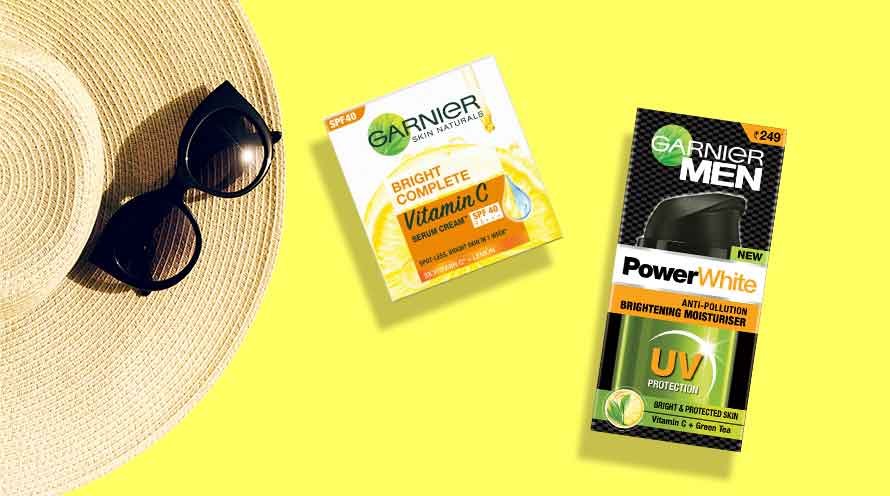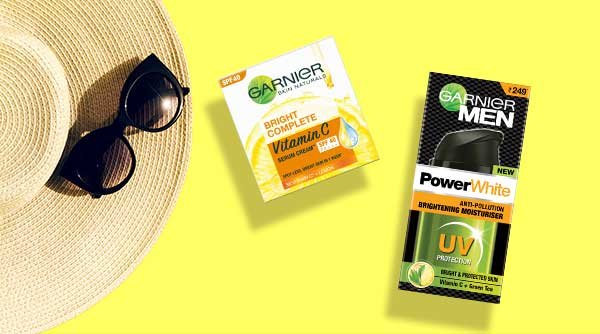5 Tips To Prevent and Reverse Sun Damage
Spending a hot summer day by the pool while sipping on an ice-cold drink sure sounds like a lot of fun. However, prolonged exposure to the sun not only causes premature ageing but the harmful UV rays can also damage your skin and cause skin cancer.
Dark spots, hyperpigmentation, deep set wrinkles around the eyes – these are all signs of sun damaged skin. While staying out of the sun is the best way to prevent sun damage, we know you can’t stay indoors every day. So, here are a few tips to keep in mind to enjoy the sun without damaging your skin.
1. SPF is non-negotiable
We know you have heard this a million times already, and that’s only because it is true – come rain or shine, you absolutely cannot skip sunscreen. Even on days when it is gloomy outside, the harsh UV rays cause skin damage on your face and other exposed parts of your body. Depending on where you live and the season, choose anywhere between SPF 20 to SPF 50 to give your skin adequate protection from the sunrays and prevent sun damage. And remember to apply a generous amount, or even the best moisturizer with SPF will not be able to protect your skin. Apply your sunscreen at least 15 to 20 minutes before you head out in the sun and re-apply it every two to three hours when outdoors. If you sweat excessively or have been spending time in water, re-apply sunscreen every one to two hours.
2. Use a vitamin C serum to reduce sun induced dark spots
Vitamin C not only repairs existing skin damage but also neutralizes free radicals and prevents further damage. Vitamin C also stimulates your skin’s collagen production that keeps your skin healthy and youthful. The brightening properties of vitamin C help fade hyperpigmentation and dark sun spots, making it a perfect ingredient for sun damaged skin. Antioxidant-rich vitamin C serums reduce dark spots and protect, repair, and brighten your skin. Add a vitamin C serum to your morning and night routine to reduce the effects of sun damage on your face.
3. Add a morning and night face cream to your regime
Prolonged exposure to the sun can either cause your skin to become dry and dehydrated or send your sebaceous glands into overdrive, leaving your face in a greasy mess. Using a moisturizing cream suitable for your skin type will help you maintain your skin’s balance and keep your sun damaged skin nourished and hydrated even in the scorching heat. Opt for a lightweight face cream in the daytime to give your skin a boost of freshness and shield it from sunrays and other external aggressors. Your skin repairs and regenerates overnight, so add a night cream to your regime to give your skin a helping hand while you sleep.
4. Step outdoors strategically
Long sleeved shirts, long bottom wear, wide-brimmed hats, scarves, and sunglasses are easy ways to shield your skin from the UV rays and prevent sun damage. Tightly woven fabrics in dark colours block more sun than loosely woven fabrics in white and other light colours, so choose your fabrics wisely. Whenever possible, avoid stepping out in the sun between 10:00 AM and 4:00 PM as the sun rays are the strongest at this time.
5. Load up on foods that repair and protect sun damaged skin
Adopting a healthy diet that is rich in anti-oxidants is a great defense against sun damaged skin. Compounds that protect plants from the sun have the same effect on your skin - think of them as natural sunscreens! Dark leafy and cruciferous vegetables, red and orange fruits and veggies like peppers, tomatoes, carrots, foods rich in beta-carotene like sweet potatoes, vitamin C-rich foods, and nuts and seeds with omega 3 fatty acids and vitamin E protect your skin cells from oxidative damage and keep it feeling healthy and looking young.
From using the right face cream and SPF to filling your plate with nutritious foods, this handy guide will help you keep sun damage at bay, no matter your skin type! Need help choosing the best skincare products? Take our skin care quiz for personalized recommendations. Check out the amazing skincare tips and Garnier skincare products for healthy and glowing skin.


